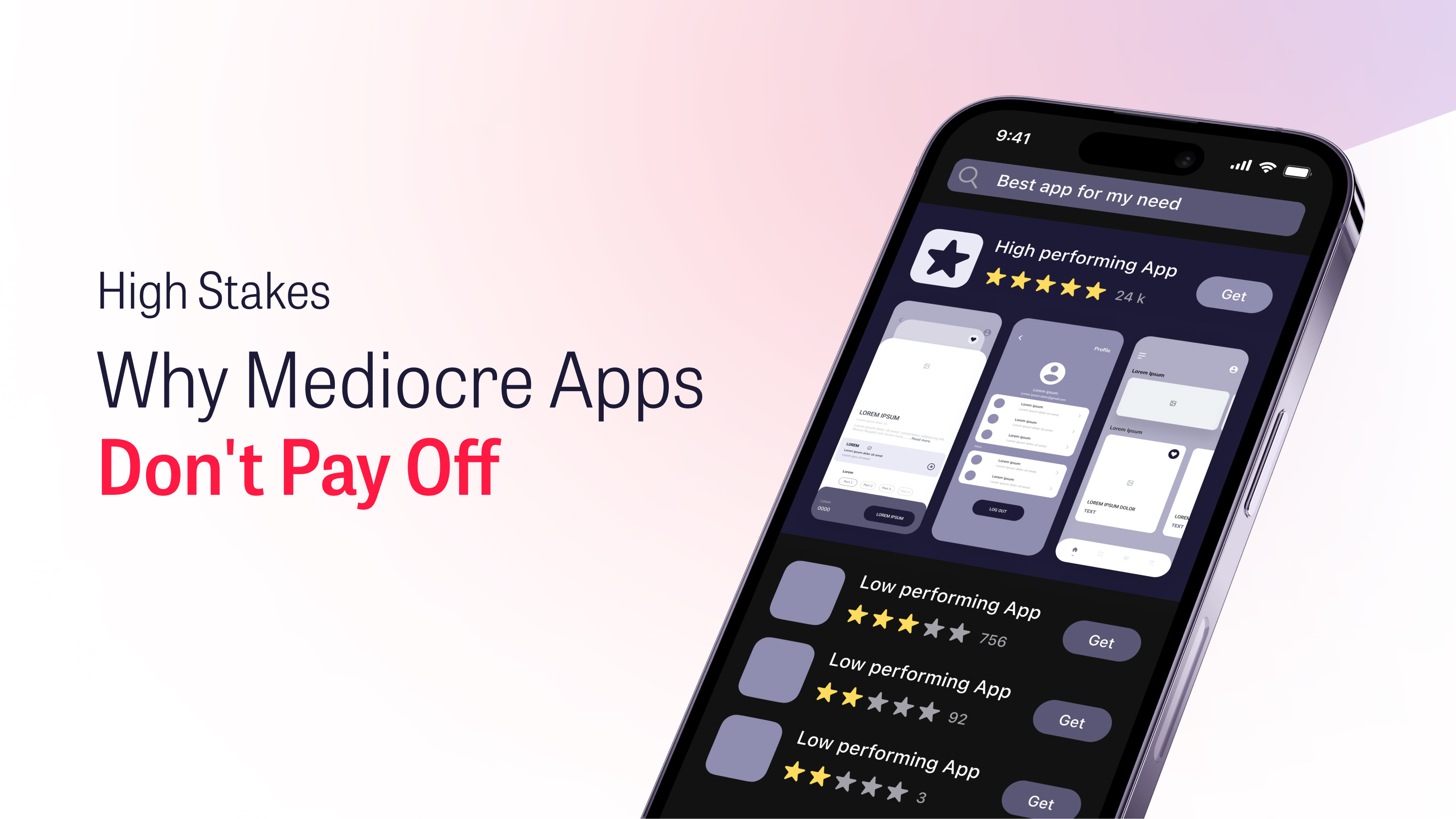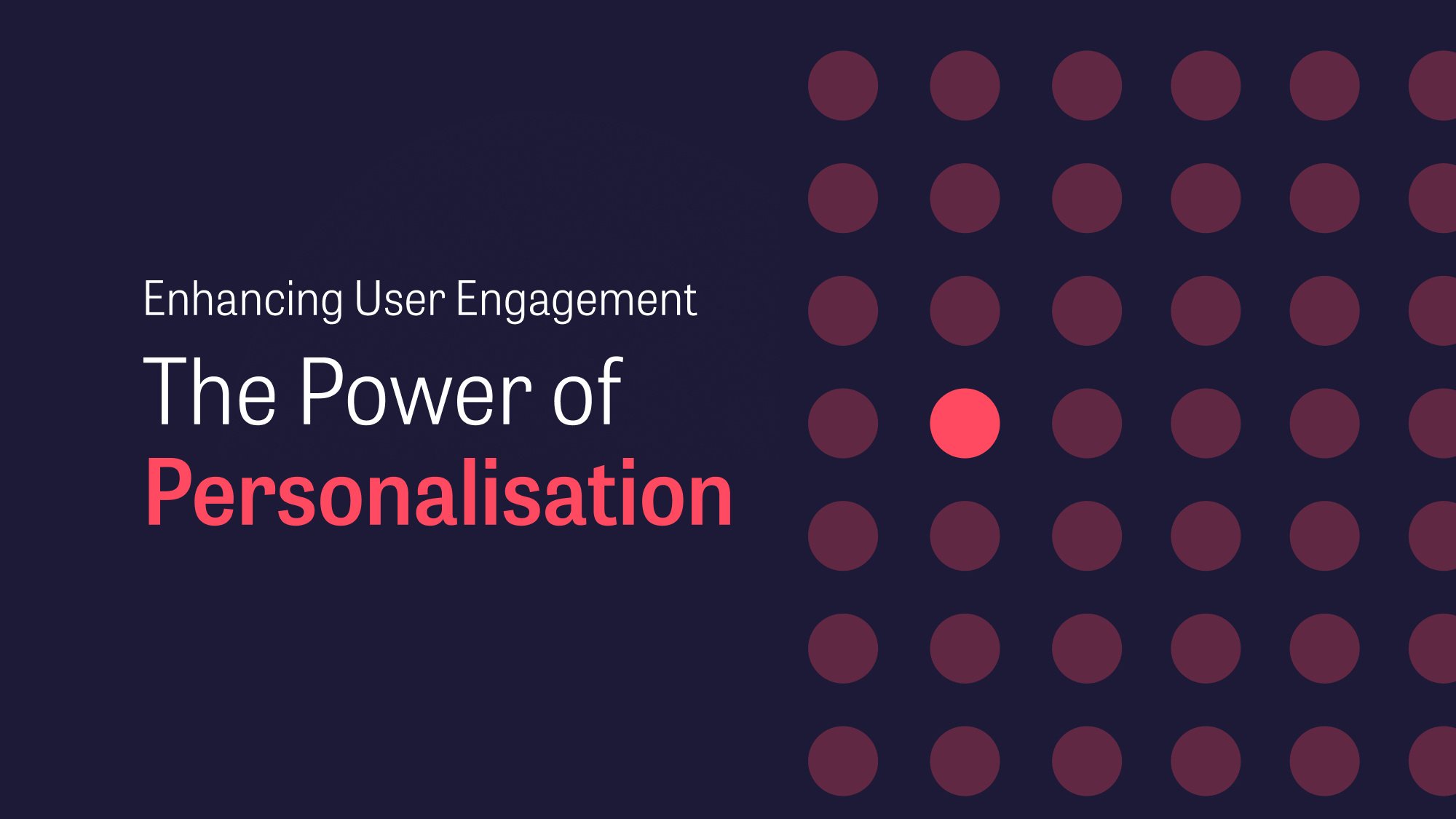
App notifications have become an integral part of our digital lives, serving as a double-edged sword for both users and businesses. When designed thoughtfully, notifications can enhance user engagement and drive retention.
In 2023, we conducted a survey with over 3000 Danish people between 18 and 70 years of age about their app preferences. It’s one of the largest studies on app usage conducted in Denmark. Five major themes were identified, which have been turned into the Mobile App Trends 2024 report. Get access to the full report below 👇
The Double-Edged Sword of Notifications: A User Retention Challenge
However, mishandled notifications can quickly become a source of frustration and lead to users uninstalling an app altogether. In fact, studies done by Google have shown that around 27% of users cite "too many notifications" as the primary reason for uninstalling apps.
When it comes to boosting app usage and revenue, we often resort to the short-term toolbox of aggressive marketing, price reductions, or increasing the frequency of app notifications. This probably won't make you a long-term winner. Then what will? 👇
There is evidence suggesting that apps, generally, are bad at designing great notifications. The recent findings from Mobile App Trends reveal that notifications are the least value-adding feature across the board in all app categories. This points to a widespread issue where app service providers often struggle to design notifications that are both relevant and engaging for users.

Mobile App Trends 2024: Relevant notifications as an important driver for app success
The three pillars of great notifications
So, how can you harness the power of notifications to engage users positively instead of alienating them? The foundation for any successful notification strategy rests on three pillars:

Mobile App Trends 2024: Three pillars of a successful notification strategy
👉 Relevance
The content should align closely with individual user preferences or needs.
😴 Timing
The notification should appear when the user is most likely to find it useful.
⛳ Actionability
The user should clearly understand the next steps that the notification is guiding them toward.
Relevance: Personalisation is Key
App developers can utilise data analytics and user behaviour metrics to grasp users interests and use it for drafting relevant notifications. Strategies include collecting data on what content your users favour – may it be genres, product items, or something entirely different – and automating push notifications to promote exactly that content. As a result, you avoid sending the same message to everyone, but rather tailor something specific to each individual.
A noteworthy approach is to send personalised offers on items that a user has added to their wishlist, especially on significant dates like birthdays.
If automated personalisation is not your strongest suit, allow users to subscribe to news, discount and product alerts at their own initiative. Granted, this might mean that the overall target audience for your notification gets smaller, but it ensures the relevancy of your notification campaign, and thus increases its open rate. Furthermore, it prevents you from spamming the wrong people and getting them to uninstall your app.
Allowing users to subscribe to notifications for news or special items to become available is an easy way of ensuring the success of a promotional notification, since users filter themselves according to relevance.
This is the strategy employed by media apps such as Mofibo and Podimo, which allows users to subscribe to news about podcasts series they follow. This simple but effective strategy brings Podimo in the top 15% based on best notifications. Commerce platforms can benefit from a similar strategy by allowing users to subscribe to campaign releases or re-stocks.
Timing: Finding the Right Moment
Understanding the user context and recognising the opportune moments for your notifications to appear on a user's device are crucial elements for effective engagement. By leveraging analytics to map out the customer journey, you can identify those pivotal moments that maximise the benefits for both the user and your business.
For service-based notifications, the key is to determine when users will most benefit from receiving specific information. Take Postnord, for instance: They send a notification when a user's package is nearing delivery. This heads-up allows the customer to prepare for the package's arrival at the start of their day. A subsequent notification confirms that the package has been delivered. This proactive approach streamlines the pickup process, making it convenient for the customer and efficient for the business. In essence, crafting value-driven notifications is about anticipating users' information needs at the right moments.
From a marketing standpoint, knowing when your customer is most likely to convert is invaluable. Consider the moments of hesitation – when a user is pondering whether to complete a purchase or engage with the service. This is where abandoned cart notifications can work wonders. By sending a timely notification offering a discount on items left in the cart, you ensure relevance and timeliness, potentially providing that final nudge for the user to finalise their purchase. This approach targets users already leaning towards buying, giving them an added incentive at just the right time.
Avoid the pitfall of sending generic messages to your entire audience at the same time. Users are at different stages of the customer journey, and a single message is unlikely to resonate equally with everyone. Tailoring your notifications to align with individual customer journeys will significantly increase the likelihood of conversion.
Another essential dimension of effective notifications is frequency. Striking the optimal balance between staying visible on your audience's radar and avoiding notification overload is crucial. The ideal frequency will depend on the specific goals of your campaign and the preferences of your audience.
Actionability: Ensure Clarity and Purpose
Every notification you send should be laser-focused on a specific goal and clearly articulate the action you intend for the user to take. Ensuring that your notifications are actionable not only gives them a raison d'être but also helps users accomplish tasks more efficiently.
Vague or purposeless notifications can result in user confusion or, even worse, irritation. Remember, each notification is a miniature intrusion into someone’s day; therefore, it should offer a meaningful value proposition. Ask yourself, "What should the user do as a result of this notification?" If you can't answer that question succinctly, it's time to go back to the drawing board.
The wording of your notifications plays a pivotal role in driving user action. Use straightforward, concise language that directly speaks to the desired outcome. Calls-to-action (CTAs) like "View Now," "Buy Today," or "Learn More" give users a clear path to follow. For example, instead of sending a vague notification like "New items available," you might opt for a more actionable message like "New arrivals just in! Swipe to Shop Now."
Incorporate elements of urgency or exclusivity to make the call-to-action more compelling. Phrases like "Limited Time Offer" or "Exclusive Deal" can incentivise users to take immediate action. However, be cautious with overusing this tactic, as excessive urgency can be perceived as pushy or disingenuous.
Adding interactive elements to your notifications can further enhance their actionability. For instance, if you have a multi-step process like a survey, consider breaking it down and allowing the user to complete the first step directly within the notification itself. Additionally, utilising deep linking to guide users directly to the relevant app screen can make the user journey seamless, thereby increasing the likelihood of the desired action being taken.
Want to dive into more relevant topics for app success? 👇
Deep dive: Marketing Vs. Service Notifications
To optimise your approach, it's important to distinguish between two primary categories of notifications: Marketing and Service. Telma explains further below 👇
Creating Value Through Marketing Notifications: Serving Users and Businesses
The primary objective marketing notifications are to bolster conversion rates by motivating users to interact more with the app's features or services. As with marketing in general, they serve the service provider.
According to the Mobile App Trends, retail apps tend to underperform in the area of notifications, a trend that may not be surprising given their sales-driven focus. Such apps are at risk of adopting ill-advised notification strategies, potentially leading to user frustration and increased app uninstalls.

Mobile App Trends 2024: Relevant notifications score within different sectors
This isn't to say that marketing notifications can't be mutually beneficial for both users and businesses. However, it does underline the imperative for app providers and developers to thoughtfully consider their push notification strategy and make sure that each notification brings value to the user.
Service Notifications: Keeping Users Informed and Engaged
In contrast to marketing notifications, service notifications rarely advertise the service in question. Instead, these are notifications that often play a vital role in the core functionality of the app service.
Unlike marketing notifications, service notifications are rarely a source of user irritation. This is largely because they provide information that is not just expected, but often explicitly requested by the user as part of their engagement with the service.
Because service notifications are generally aligned with pre-existing user interaction, they are intrinsically more relevant and, therefore, more favourably received. Take, for example, food delivery apps. Once you've placed an order, you've willingly entered into a service engagement. Subsequent notifications about the status of your order – its preparation, dispatch, and imminent arrival – are not only expected but also highly valued. As a result, apps like GLS and Postnord score amongst the top in 10 in terms of most relevant notifications.

Mobile App Trends 2024: App with high scores on relevant notifications
However, even the realm of service notifications is not without its pitfalls. Mobile App Trends 2024 found that, in terms of notifications, social media apps are the single worst performing app category behind retail apps. While few would want to miss an important message from close contacts, these platforms sometimes compromise the quality of notifications by excessively reporting trivial social activities. The issue arises when such platforms flood users with notifications about every minor social interaction, diluting the importance and relevance of truly meaningful alerts.
App notifications can boost user engagement but must be used thoughtfully to avoid frustrating users. A successful strategy focuses on relevance, timing, and actionability. By following these principles, businesses can optimise their notification strategy for better user engagement and retention.
Explore the latest tech trends and their impact on business and digital products to stay on top of the app market 👇









